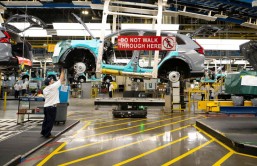
(Photo : Anna Shvets from Pexels)
It can be scary when people start packing up their things after a meeting in their supervisor's office. Tensions in the workplace can escalate when people start getting laid off or furloughed. But things can take even stranger turns when individuals are fired from their job. What are the differences between employees being fired versus laid off versus furloughed?
What Is the Difference Between Being Fired Versus Laid Off?
While neither being fired nor laid off is an appealing proposition for employees, it's important for individuals to understand the differences between these concepts. Not only are there fundamental distinctions to be made in terms of what these things mean, your reality is going to be influenced by whether you're fired or laid off.
At the most simplistic level, being fired means your employer is letting you go because of something they've identified with your behavior. There's a wide range of reasons why someone might be fired from their job-from being rude to their coworkers to stealing money or supplies from the company. No matter the circumstances, however, the basis for being fired is that your employer wants you gone due to specific behaviors. It's certainly possible that you disagree with their assessment, though, which is why it's wise to have a cool and collected discussion with human resources before you depart. You should also do whatever you can to have the reasons for your termination written up in a formal report from HR. This is especially critical if you believe you've been fired for unjust causes.
The act of being laid off is a bit different than being fired from a job. While the results are largely the same, the basis for a layoff isn't the same. Being laid off means you've lost your job due to overarching changes that weren't totally within your control. While this can still be devastating to both your morale and your finances, it's not something that could have been avoided by simple changes in behavior. For instance, you might be laid of if your company is restructuring, or if a department is no longer deemed necessary after the completion of certain key projects.
There's a majorly important distinction to be made between getting fired versus laid off: how it will affect your unemployment status. Often, you won't be able to qualify for unemployment if you've been fired, while you can get unemployment benefits after you're laid off. Having or not having unemployment benefits can have huge financial implications for you and your family, so ensure you have a solid understanding of how this works in your state.
While you likely won't be getting unemployment from being fired, oftentimes, you'll get some form of severance pay whether or not you've been fired or laid off. Severance packages are given to employees upon termination in order to help them transition into a new role after departing the company. It's essential you know how severance pay might affect your taxes. Not everyone knows that you have to cough up taxes on severance pay, but this is in fact the case. Go to www.freedomdebtrelief.com to get a better idea of how you might be taxed for severance pay, whether you've been fired or laid off from your job.
How Is Being Furloughed Different Than Being Laid Off?
Employees are furloughed when they're not technically let go from a company, but aren't allowed to work or collect a paycheck. This can be the right move for companies when they want to retain employees despite near-term challenges. Furloughs were a common occurrence at the beginning of the Coronavirus pandemic, when workplaces radically changed overnight. This is significantly different than being laid off, as furloughed employees should expect to resume their previous work schedules in the future.
One of the great benefits of furloughs from the employee standpoint is that you're typically able to retain your benefits. This is a key consideration if you rely on your workplace for health insurance. It's also possible to only partially furlough employees, for maybe one or two days per week when they would normally be working all five. Instating furloughs can also be a tough balancing act for employers, as many workers will be unhappy with this scenario and might start looking for work elsewhere.
There are some key differences you need to understand between the three major forms of employers changing the status of their workers: fired versus laid off versus furloughed. Whether you're an individual experiencing one of these situations or a company having to enact them, knowing how they're similar and different will help you navigate the process.
* This is a contributed article and this content does not necessarily represent the views of hngn.com








